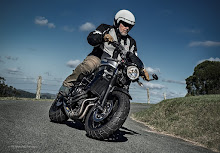.
We can only watch and envy the brilliant conditions that some sea kayakers have. Where I live there are no tidal races worth playing on with a sea kayak: there are no decent standing waves to surf.
What we have to content ourselves with is a medium tidal flow (up to 3 knots) over a flat sea bed that produces just ripples.
But not all is lost: given the right conditions one can find a mock tidal race.
If a strong wind opposes fast flowing water moderate size waves are created and caught on the right day one can dream to be at the Skooks (not really).
The waves are generally short and not really standing: they form and peak for a short time and then fall again.
The flow is there but the waves are not constant; getting a ride on one of those waves requires a bit of effort (furious paddling) that is rewarded with a short glide.
It is similar to short wave surfing but the waves generally don’t crest and break.
The weather forecast was indicating that Sunday was going to be rather windy (20-30knots) and touring onthe Bay would have been hard work (unless we decide to
kayak sail).
Since the tide was flooding to midday and the wind would be pushing against the flow, in the morning we hoped to find a spot that would produce waves to play in.
It was weird to be pointing the bow out to sea to surf our kayaks, usually one would be coming in with the waves onto shore.
select 720p if you have fast Internet connection
I find that an ideal boat for such conditions is a shorter sea kayak with rounded chines that can be edged well and that is responsive to the paddler’s input.
A short British style boat comes to mind where one does not rely on the rudder to manoeuvre the boat but uses the hull shape turned on its edge to carve a turn.
My Zegul 520 is not exactly a boat that fits that description; it’s a bit on the long side (at the waterline) with not a lot of rocker and it’s hard to turn since I find that with my weight the extended keel does not released when edged. A lighter person would find the same kayak perform way differently.
I have kayaks that would surf those conditions way easier than this hard chined, low rocker narrow low volume boat.
So why do I use it? Because it’s challenging and makes me a better kayaker.
I assume it must be the same reason why some motor enthusiasts disable the auto traction control to have “more fun” when driving their cars aggressively :-)
Probably why some mountain bikers choose to run a single speed on steep and rough terrain instead of a cluster of gears.
I have to work hard not to fall in the water; hard chined boats are less forgiving as rounded ones. I am heavy and I push the hull deeper into the water; edging the narrow hull does have less effect on manoeuvrability compared to my higher volume British style kayak. I have to sweep stroke aggressively to make that kayak turn.
The kayak does bury her bow into the water when surfed down a steep short wave and gives me a few moments of mild panic hoping it won’t pitch me over.
Hard work but more fun since it keeps me on my toes.
Greg Schwarz also likes his hard chined low profile/low volume kayak for surfing small waves. His kayak is maybe a bit shorter than mine (at waterline) and has less volume, it's more manoeuvrable but requires good technique to keep it upright in textured water. He finds the Tahe Greenland an excellent kayak for rough waters but Greg is a very skilled kayaker.
With a shorter waterline that helps quickly accellerate the kayak down the wave, the flat bottom puts it on the plane to allow fast runs. Turning that kayak is a real breeze. Carved turns are very effective but sloppy technique would make using that kayak in rough water a handful.
I feel that hard chined kayaks seem to surf better than round hulled ones as long as I concentrate and handle the grabby nature of hard chines.
In the meantime I am learning on how to become more relaxed in bumpy conditions trying to gain better balance.
.










